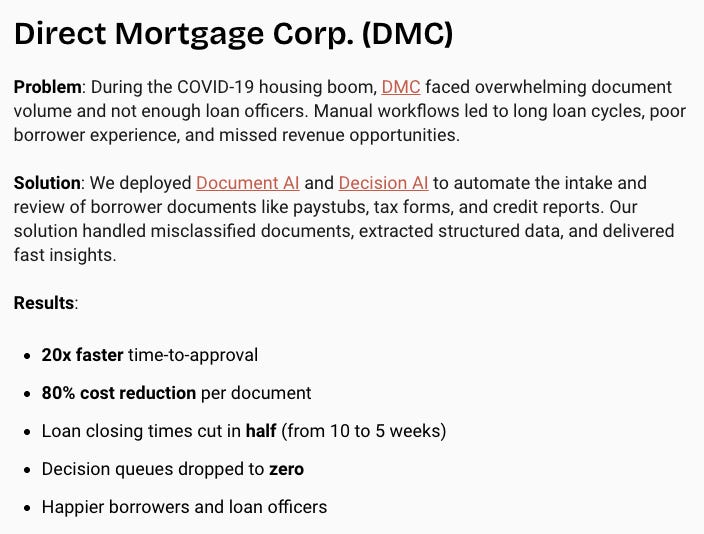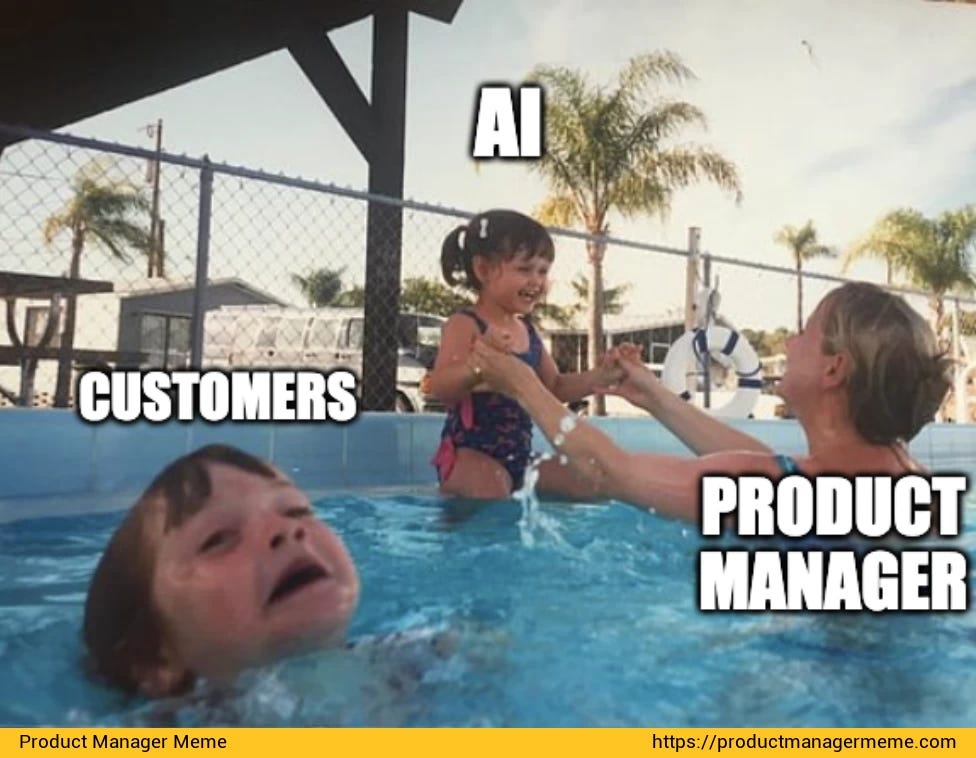Transform Uncertainty into Learning Goals
Read the first edition of AgentBuild's Weekly Newsletter: why tech pros are facing an AI identity crisis, a step-by-step Agent Lab Card template, the latest breakthroughs from enterprise AI
Hey AgentBuilders,
Welcome to the very first edition of the AgentBuild Weekly Newsletter! 🚀
In this issue, we explore the identity shift tech professionals are facing in the age of AI, share a practical blueprint for designing agents with the Agent Lab Card, spotlight what’s new in the agentic world, highlight enterprise AI wins, and scan the latest job opportunities shaping this space.
Confused how your role evolves with AI?
Many tech professionals are. I have been talking to a number of techies and looking at folks around me - my colleagues, my friends, my relatives.
I can see almost everyone is having an identity crisis.
Is this real? Yes.
Does it need to be that way? Hell, no.
Here’s why:
Many organizations are doubling down on AI. CXOs are under pressure to show results fast, so they’re chasing AI experts, PhDs, and veterans. But this won’t last.
Real transformation doesn’t hinge on one role. It depends on the ones that safeguard against failure - and that’s almost every role in the org, unless your job is purely repetitive and codable (which AI will eat first).
I’ve been in this game for two decades. I’ve seen the rise and fall of every hype: cloud, big data, ML, blockchain, and now GenAI.
Hype has a shelf life. When it settles, real use cases emerge.
And that’s when properly engineered systems and well-aligned teams shine.
So what should you do?
How do you find your place in the age of AI?
How do you stand out?
👉 Read this article. Tech Professionals Are Having an Identity Crisis - and It Doesn’t Need to Be That Way
Learn how to design an AI Agent
In this section, we will share practical lessons you can use to design and build AI Agents. Every week, we will bring in artifacts, code snippets, prompts, frameworks, that you can use to build.
📣 Today we cover the Agent Lab Card.
Agent Lab Card is an one-page, 30-minute blueprint for designing useful AI agents - not coding them. This should be the first step of your agent building process. It matters because disciplined planning builds judgment and trust.
This card guides you to define the problem, map inputs, outline steps, specify outputs, and set quick checks - so every session ends with clear evidence, shared language, and the next best move.
Remember, this card has to be versioned. As you will need to update it in iterations are you learn from your tests.
Here is a template you can use:
AGENT LAB CARD — <Name of agent>
1) Problem (1 sentence):
<What should this agent do, for whom?>
2) Success (measurable, today):
<e.g., produce a usable draft reply for 7/10 test messages>
3) Inputs:
<Where data comes from - docs, sheet, API, examples>
4) Steps (max 5):
1. Read input
2. Find needed info
3. Draft output
4. Self-check (policy/tone/fields)
5. Save result (or escalate)
5) Output format:
<JSON fields or template the agent must fill>
6) Test set (5–10 items):
<Short list or link>
7) Quick eval (tick ✓):
[ ] Answers the question
[ ] Uses only given info
[ ] Tone is on-brand
[ ] Includes sources/IDs
8) Run cost & time (estimate):
<£ / item, seconds / item>
9) Next improvement (pick one):
<What you’ll fix after today’s run>Example:
AGENT LAB CARD — FAQ Auto-Reply Agent
1) Problem: Draft a helpful reply to common support emails.
2) Success: 7/10 drafts usable with ≤1 small edit
3) Inputs: “FAQ” tab in Google Sheet (title, content); email text
4) Steps: Read → Find top 3 FAQ snippets → Draft → Check (tone/sources) → Save draft
5) Output format: {subject, body, sources[]
6) Test set: 10 past emails (password reset, invoice copy, refund…)Why start here? Because most “agents” fail from fuzzy planning. This card helps you plan better.
Where this goes next:
First, build these cards for your agents.
Then turn one card into a small, click-and-run demo.
After that, add quick tests, simple guardrails, and a tiny to visualize metrics.
Finally, connect it to real tools and run a short pilot.
End result: you’ll have a repeatable path from idea → plan → demo → pilot.
This will give you the confidence to build agents that actually help people.
👉 NOW, IT’S YOUR TURN TO SHINE✨✨
Build your Agent Lab Card and share a screenshot with me.
Your work will get featured in your next publication. Yay!
Let’s learn together, let’s make it real.
What’s new in the Agentic World?
🛒 Google’s AP2 Protocol: Agents That Shop for You
Google just launched AP2, a new protocol that lets AI agents shop and pay on your behalf - using cards or even stablecoins. This could make online transactions smoother, safer, and fully automated. As adoption grows, expect agents to handle bookings, purchases, and payments. [Read Google’s blog]
🧑💻 OpenAI Agents SDK Adds TypeScript
The OpenAI Agents SDK now supports TypeScript, making it easier for web devs to build AI agents. New features include human-in-the-loop approvals for safer workflows. It’s a lean orchestration framework with built-in tools, streaming, debugging, and multi-agent support. A big step for scalable, production-grade agentic apps.
Learn about OpenAI Agent latest releases here:
Enterprise AI Updates:
💬 CVS Health Cuts Live Requests by 50% in Just 30 Days
CVS Health reduced live agent chat volumes by 50% in just 30 days after deploying agentic AI for IT, HR, and procurement support requests in 2025. The solution minimized the need for human intervention and accelerated issue resolution, improved employee productivity, and saved CVS Health significant costs. This shift allowed CVS to automate workflow execution and directly solve problems, rather than just providing scripted responses or knowledge articles
📊 Faster, Cheaper Home Loans using AI Agents
Direct Mortgage Corp’s new AI agents now handle loan paperwork automatically, sorting and extracting the right info from hundreds of file types - even when they’re mislabeled. With this upgrade, approvals happen 20x faster, costs drop by 80%, and closing times are cut in half. This smart automation means quicker decisions, happy borrowers, and a smoother mortgage experience for everyone.
Job Opportunities in AI
Every week, I’ll share fresh signals on how AI is reshaping careers, not only tech roles. Think communicators, analysts, ethicists, project managers, and strategists.
💡 About 35% of AI jobs today need no coding. Skills like prompt writing, digital storytelling, and AI ethics are in high demand.
🌍 Global trend: non-tech AI roles are booming in the US, India, Poland, the UK, and remote markets.
💰 Median pay: $90K–$110K globally (higher in the US/Europe, lower in emerging markets), with leadership roles earning more.
AI isn’t just for the technical crowd, the opportunities are wider than you think.
🎯 Role Spotlight: AI Product Manager
What you do: Launch and lead AI-powered products across industries - from ecommerce and banking to SaaS and healthcare.
Who’s hiring now:
Microsoft & Google → AI-first product lines (Copilot, Gemini).
Stripe & Shopify → embedding AI into commerce tools.
JP Morgan & HSBC → AI-driven risk and customer platforms.
Startups like Anthropic, Cohere, and Mistral → building AI-native products.
Many more companies globally
Skills that matter:
Product strategy & user research
Cross-functional teamwork (tech, design, marketing)
Business case & communication skills
🚫 What you don’t need: coding, deep ML model expertise, or academic AI research.
Find AI Product Manager job and summarize the skills needed
Use this prompt to find roles for AI Product Managers from global job boards and learn about the skills they are looking for.
Act like a tech recruiting research analyst skilled in web sourcing.
Objective: Find “AI Product Manager” roles posted in the last 3 weeks (21 days) that are currently open, then extract skills from at least 10 unique postings and summarize the most common skills requested.
Instructions (follow in order):
1) Search: Use job boards and ATS sites (LinkedIn Jobs, Indeed, Glassdoor, Greenhouse, Lever, Workday, Ashby, company career pages) with the Boolean query: "AI Product Manager" AND ("AI" OR "Artificial Intelligence"). Apply a posted date filter of last 21 days.
2) Open-status check: Only include roles still accepting applications (e.g., “Apply” button present, not “Closed”, “On hold”, or “No longer accepting”). Capture posted date in local time zone.
3) De-duplicate: Remove cross-posts and near-duplicates across sources by URL and identical title/company/location.
4) Extract fields per posting: title, company, location/remote type, posted date, source URL, and the full skills/requirements text.
5) Skill parsing: From the requirements text, extract and normalize skills to canonical forms (e.g., product strategy; cross-functional leadership; roadmap & prioritization; stakeholder management; metrics/analytics; A/B testing/experimentation; SQL; Python; user research; GTM; AI/ML fundamentals; LLMs; prompt engineering; RAG; model evaluation; data privacy; AI ethics/responsible AI; MLOps; cloud platforms; security/compliance; storytelling). Merge synonyms and stem variants.
6) Minimum sample: Continue until you have ≥10 unique open postings (aim for 15–25 if readily available).
7) Summary output (concise but information-dense)
- A ranked table of top skills with: Skill | Count | % of postings.
- 5–8 bullet insights highlighting must-haves vs nice-to-haves, emerging asks (e.g., prompt engineering, responsible AI), and any tooling clusters (SQL/Python, analytics, model evaluation).
- Method note: list sources checked and date range used.
- Appendix: a compact table of included postings (Company | Role | Location/Remote | Posted date | URL).
8) Quality guardrails: Prefer primary ATS pages over aggregators; quote short evidence snippets for any unusual requirements; exclude roles where “AI” refers only to a team name without AI responsibilities.
Constraints:
- Keep the final write-up tight and scannable.
- Use today’s date as the anchor for “last 21 days.”
- Do not invent data; include URLs for verification.
Work on this step-by-stepCommunity Updates
AgentBuild Circles - Cohort 1 is in full flight! 🚀
Our very first cohort is underway, and it’s been energizing to watch. Builders are diving into practical frameworks, drafting their first agent workflows, and learning by doing. The energy is real, ideas are being tested and skills are being sharpened together. It already feels like the start of something bigger.
🙏 Thank you everyone who found time to book 1-to-1 with me
Each conversation was inspiring and packed with fresh ideas. The feedback has been incredible. I love these deep-dive chats as they spark real ideas.
👉 If you’d like to unlock the same kind of clarity and momentum, keep an eye out - I’ll be opening up more slots soon.
🎉🎉 Welcome Nagaswetha
Our Community Newsletter Contributor
Nagaswetha will be writing the community newsletter with me.
We are very excited to bring valuable content to you, every week.
Evolving the Newsletter
This newsletter is more than updates - it is our shared notebook. I want it to reflect what you find most valuable: insights, playbooks, diagrams, or maybe even member spotlights.
👉 Drop me a note, comment, or share your suggestion anytime.
Your feedback will shape how this evolves.
Found this useful? Ask your friends to join.
We have so many things planned for the community - can’t wait to share more soon.







https://medium.com/@jcapriola/what-happens-when-you-focus-only-on-features-and-deployment-steps-not-on-foundational-security-0d0f9d729f25